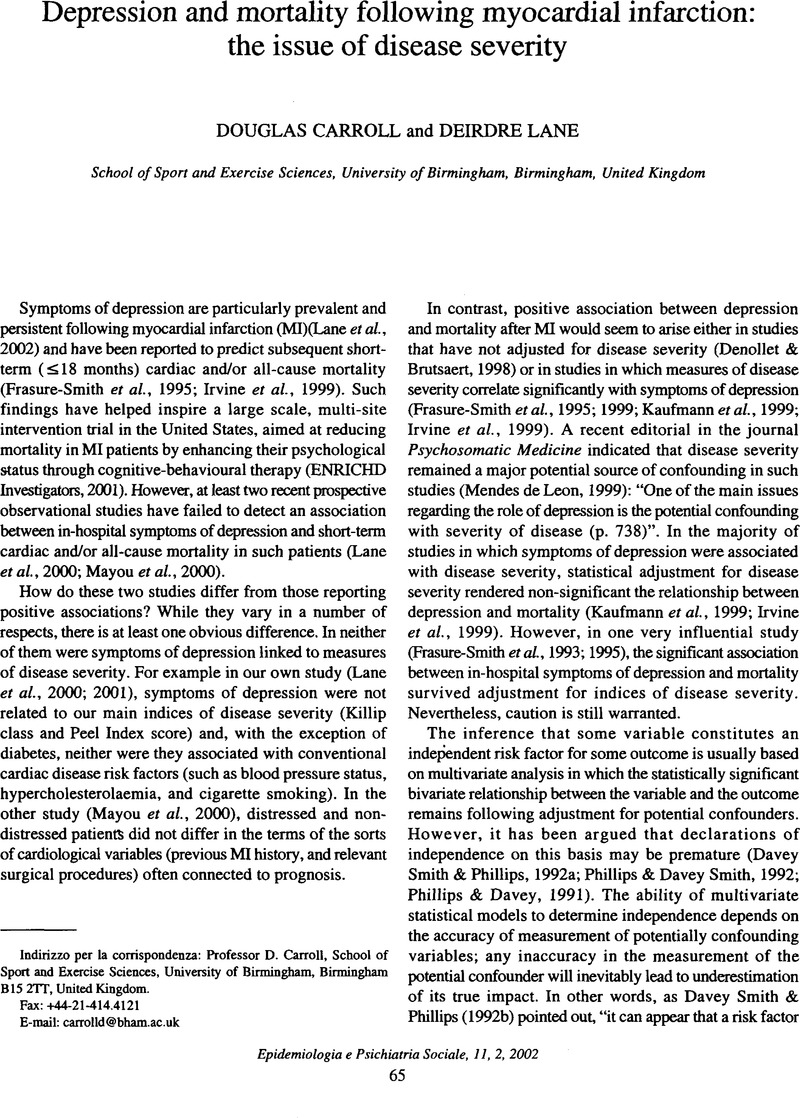Crossref Citations
This article has been cited by the following publications. This list is generated based on data provided by Crossref.
Rudisch, Bruce
and
Nemeroff, Charles B
2003.
Epidemiology of comorbid coronary artery disease and depression.
Biological Psychiatry,
Vol. 54,
Issue. 3,
p.
227.
Lane, Deirdre
Carroll, Douglas
and
Lip, Gregory Y.H.
2003.
Anxiety, depression, and prognosis after myocardial infarction.
Journal of the American College of Cardiology,
Vol. 42,
Issue. 10,
p.
1808.
Christenfeld, Nicholas J. S.
Sloan, Richard P.
Carroll, Douglas
and
Greenland, Sander
2004.
Risk Factors, Confounding, and the Illusion of Statistical Control.
Psychosomatic Medicine,
Vol. 66,
Issue. 6,
p.
868.
Yin, Han
Liu, Yuting
Ma, Huan
Liu, Guihao
Guo, Lan
and
Geng, Qingshan
2019.
Associations of mood symptoms with NYHA functional classes in angina pectoris patients: a cross-sectional study.
BMC Psychiatry,
Vol. 19,
Issue. 1,


